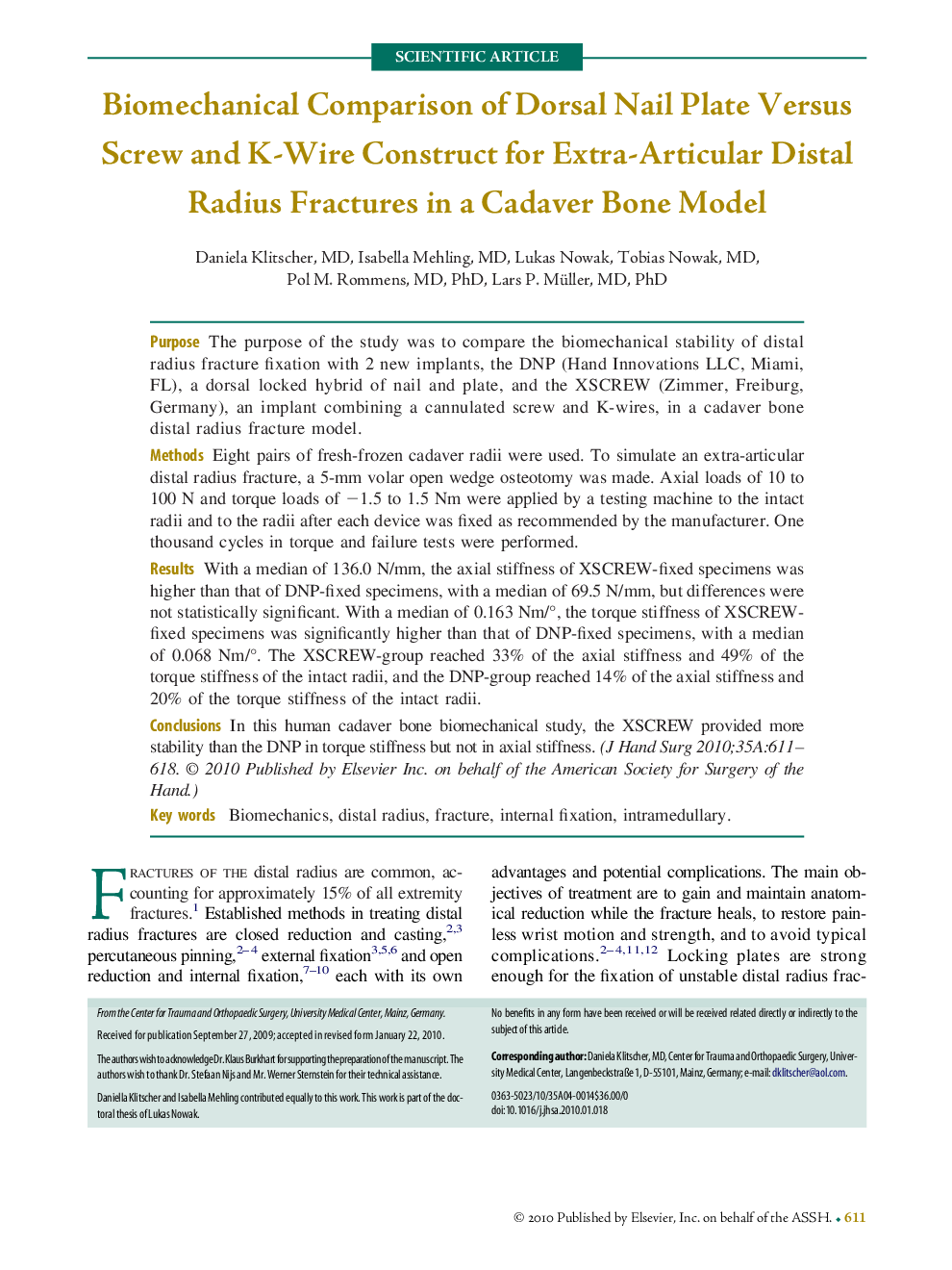| Article ID | Journal | Published Year | Pages | File Type |
|---|---|---|---|---|
| 4071135 | The Journal of Hand Surgery | 2010 | 8 Pages |
PurposeThe purpose of the study was to compare the biomechanical stability of distal radius fracture fixation with 2 new implants, the DNP (Hand Innovations LLC, Miami, FL), a dorsal locked hybrid of nail and plate, and the XSCREW (Zimmer, Freiburg, Germany), an implant combining a cannulated screw and K-wires, in a cadaver bone distal radius fracture model.MethodsEight pairs of fresh-frozen cadaver radii were used. To simulate an extra-articular distal radius fracture, a 5-mm volar open wedge osteotomy was made. Axial loads of 10 to 100 N and torque loads of −1.5 to 1.5 Nm were applied by a testing machine to the intact radii and to the radii after each device was fixed as recommended by the manufacturer. One thousand cycles in torque and failure tests were performed.ResultsWith a median of 136.0 N/mm, the axial stiffness of XSCREW-fixed specimens was higher than that of DNP-fixed specimens, with a median of 69.5 N/mm, but differences were not statistically significant. With a median of 0.163 Nm/°, the torque stiffness of XSCREW-fixed specimens was significantly higher than that of DNP-fixed specimens, with a median of 0.068 Nm/°. The XSCREW-group reached 33% of the axial stiffness and 49% of the torque stiffness of the intact radii, and the DNP-group reached 14% of the axial stiffness and 20% of the torque stiffness of the intact radii.ConclusionsIn this human cadaver bone biomechanical study, the XSCREW provided more stability than the DNP in torque stiffness but not in axial stiffness.
